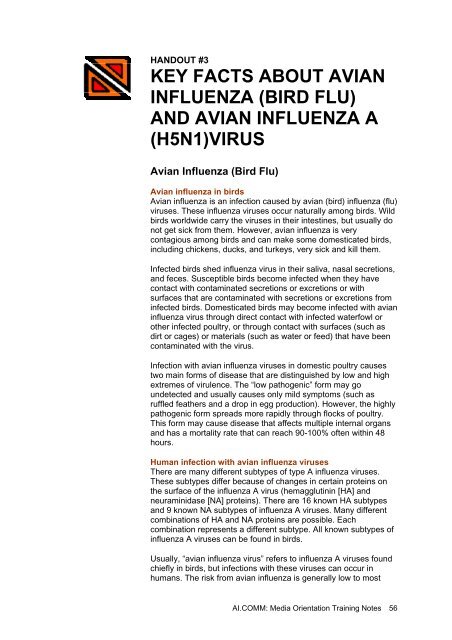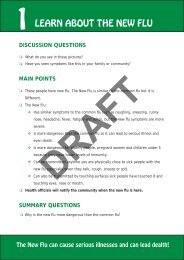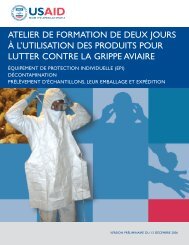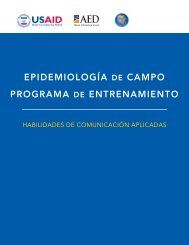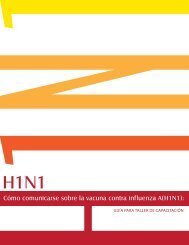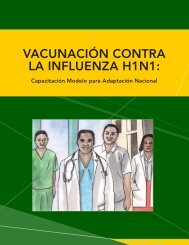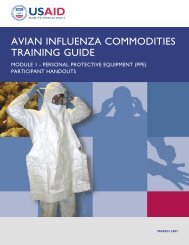Media Orientation Training Notes. Three Day Workshop - AI.Comm
Media Orientation Training Notes. Three Day Workshop - AI.Comm
Media Orientation Training Notes. Three Day Workshop - AI.Comm
- No tags were found...
Create successful ePaper yourself
Turn your PDF publications into a flip-book with our unique Google optimized e-Paper software.
HANDOUT #3KEY FACTS ABOUT AVIANINFLUENZA (BIRD FLU)AND AVIAN INFLUENZA A(H5N1)VIRUSOF 5Avian Influenza (Bird Flu)Avian influenza in birdsAvian influenza is an infection caused by avian (bird) influenza (flu)viruses. These influenza viruses occur naturally among birds. Wildbirds worldwide carry the viruses in their intestines, but usually donot get sick from them. However, avian influenza is verycontagious among birds and can make some domesticated birds,including chickens, ducks, and turkeys, very sick and kill them.Infected birds shed influenza virus in their saliva, nasal secretions,and feces. Susceptible birds become infected when they havecontact with contaminated secretions or excretions or withsurfaces that are contaminated with secretions or excretions frominfected birds. Domesticated birds may become infected with avianinfluenza virus through direct contact with infected waterfowl orother infected poultry, or through contact with surfaces (such asdirt or cages) or materials (such as water or feed) that have beencontaminated with the virus.Infection with avian influenza viruses in domestic poultry causestwo main forms of disease that are distinguished by low and highextremes of virulence. The “low pathogenic” form may goundetected and usually causes only mild symptoms (such asruffled feathers and a drop in egg production). However, the highlypathogenic form spreads more rapidly through flocks of poultry.This form may cause disease that affects multiple internal organsand has a mortality rate that can reach 90-100% often within 48hours.Human infection with avian influenza virusesThere are many different subtypes of type A influenza viruses.These subtypes differ because of changes in certain proteins onthe surface of the influenza A virus (hemagglutinin [HA] andneuraminidase [NA] proteins). There are 16 known HA subtypesand 9 known NA subtypes of influenza A viruses. Many differentcombinations of HA and NA proteins are possible. Eachcombination represents a different subtype. All known subtypes ofinfluenza A viruses can be found in birds.Usually, “avian influenza virus” refers to influenza A viruses foundchiefly in birds, but infections with these viruses can occur inhumans. The risk from avian influenza is generally low to most<strong>AI</strong>.COMM: <strong>Media</strong> <strong>Orientation</strong> <strong>Training</strong> <strong>Notes</strong> 56


